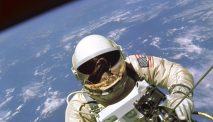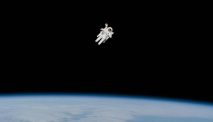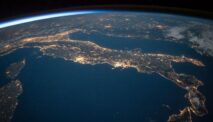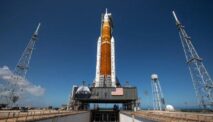Diksia.com - NASA’s James Webb Space Telescope has made another long-awaited scientific discovery.
This time NASA scientists have found water on a rare comet in the main asteroid belt for the first time.
The discovery allowed solar system scientists to study the origin of much of the water on Earth.
Using the Webb near-infrared spectrograph (NIRSpec), astronomers have confirmed that gas — specifically water vapor — is present around the comet.
This discovery, cited on NASA’s website, shows that water ice from the ancient solar system may be preserved in this region.
However, the successful detection of water brought with it a new mystery: Unlike other comets, Comet 238P/Read has no detectable carbon dioxide.
“Our water-filled world, teeming with life and, to our knowledge, unique in the universe, is something of a mystery — we’re not sure how all this water got here,” said Stefanie Milam, Webb’s associate project scientist for planets. Science and co-authors of studies reporting results.
“Understanding the history of water distribution in the solar system will help us understand other planetary systems and whether they could host Earth-like planets,” he added.
Comets are main-belt comets—objects found in the main asteroid belt but regularly exhibiting a halo or coma and a comet-like tail.
Major belt comets are a relatively recent classification, and Comet Baca was one of the three original comets used to define the category.
Previously, comets were known to reside in the Kuiper Belt and Oort Cloud beyond the orbit of Neptune, where their ice could be conserved further from the Sun.
It is this frozen material that vaporizes as it approaches the sun that gives the coma its characteristic coma and flowing tail that distinguishes it from asteroids.
Scientists have long speculated that water ice might be preserved in the warmer asteroid belt, around Jupiter’s orbit, but definitive proof is lacking.
“In the past we have seen main belt objects with all the characteristics of a comet, but only with this precise spectral data from Webb can we say yes, it must be water ice causing this effect,” said University of Washington astronomer Michael Kelley. Maryland, quoted from CNN.
“Using Webb’s observations of Comet Read, we can now show that water ice from the early Solar System can be preserved in the asteroid belt,” Kelley said.
The main belt comet was first co-discovered in 2006 by study co-author Henry Hsieh, a senior scientist at the Planetary Science Institute in Tucson, Arizona.
It’s possible that warmer temperatures in the main asteroid belt caused Comet Read to lose carbon dioxide over time, the researchers said.
“Long stays in the asteroid belt can cause carbon dioxide to evaporate more easily than water ice and can persist for billions of years,” Kelley said.
“Comet Read also likely formed in a warmer pocket of the solar system with no carbon dioxide,” Kelley continued.
The observing team is striving to study other main-belt comets and compare them to Webb’s Comet Read data to determine if the celestial body is also lacking in carbon dioxide and to determine next steps in unlocking the mysteries of rare comets.
“Now that Webb has confirmed that water is preserved near the asteroid belt, it will be very interesting to continue this discovery with a sample collection mission and see what else the belt’s main comets can tell us,” Milam said.






